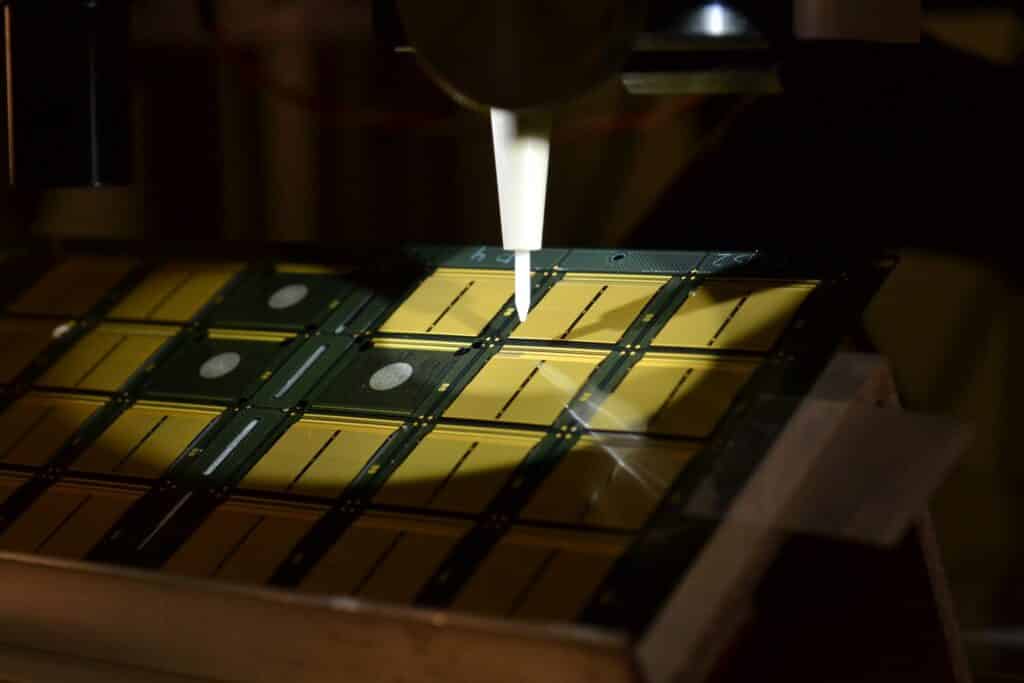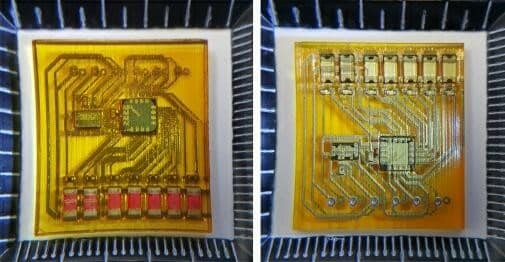Regarding 3D printed sensors, there are reports that Nike is using nanotechnology to embed sensors into clothing. In the near future, users will be able to use 3D printing technology to make their own smart T-shirts. Athletes and coaches will be able to better understand whether they are over-training and whether the athlete’s body is running out of water or is too nervous. This will also reduce the cost of production and supply chain management for companies such as Nike.
3D printing with embedded sensors will also change the medical device industry. A foreign clinic, Mayo Clinic, has developed the first such device. The hospital is exploring how to implant sensors into devices to strengthen the monitoring of patients ’physical conditions.
So what specific 3D printing technology is used for the 3D printing of these sensors? What are the requirements for 3D printing technology?
Micro 3D printing
A new technology from New Zealand called Callaghan Innovation is driving the development of micro 3D printing. It owns MicroMaker3D printing technology, which is a new type of micro 3D printing, provides manufacturing support for prototype technologies of electronic products such as micro parts, micro sensors, and IoT components, optical devices, etc.
The use of micro printers can cost-effectively produce various products, such as filters, antennas, optical products, microvalves, fluid channels, and micro gears and springs. What makes MicroMaker3D unique is its patent-pending Laminated Resin Printing (LRP) technology, which uses solid resin sheets instead of liquid resins. The thickness is very thin, only 5 microns (0.005 mm), the printer’s voxel resolution is 5 microns.
The LRP works as follows: a dry film photoresist resin sheet is placed on the printing bed, and a UV light source is used to project the cross-section of the model onto it. Then place another resin sheet on top of the first resin sheet and project the next cross-section. After printing all the layers, through a precisely controlled catalytic crosslinking reaction in the active area, a stack of resin sheets is heated and cured to achieve complete polymerization. Finally, all unpolymerized resin is washed away, leaving a completely dense part.
This LRP technology of MicroMaker3D printing has some good features. First, it can print any degree of drape because the unpolymerized resin can be used as a support material. This also makes it possible to print moving parts with extremely small tolerances. Another advantage of LRP is that since the resin is already solid, it will not shrink and warp when cured, so the size and shape of the part are completely correct. The process uses industry-standard photoresists that are resistant to high temperatures, solvents, acids, and harsh environments. Unlike lithography, LRP does not require a cleanroom, so it is easier to use.
Aerosol Jet Technology
Optomec’s Aerosol Jet Technology is a proven mature technology used in the manufacture of sensors. Previously, researchers at Swansea University used Optomec Aerosol Jet Technology to directly print strain and optical creep sensors for use on the surface of compressor blades of jet engines. Using laser detection systems and optically measured sensors, the researchers were able to determine the creep of a component within 10 nanometers.
The process of printing the sensor begins with atomizing the nano silver conductive ink with a mist generator. First, the deposition head is induced by flow aerodynamics to generate a sheath gas annular flow. The nozzle is aligned with the substrate and sprayed at a coaxial flow rate. The pattern of the material is completed by CNC commands, and while the substrate remains fixed, the distance between the deposition head and the substrate remains unchanged to ensure accurate deposition of the material.
After the ink is deposited, it is then heat-treated to make the sensor have the correct conductivity and mechanical properties. In addition, local treatment is possible. The use of laser processing allows the materials used to have very low temperature tolerances. The end result is a high-quality thin film, with edge definitions as thin as 10 nanometers, bringing high performance.
Optomec aerosol jet technology in the 3D printing of sensors, in the patent approved by GE on January 17, 2017, disclosed a method for manufacturing strain sensors on turbine components. The method includes the planning of the external surface of the turbine components, and how to deposit the ceramic material onto the external surface at a designated location. The patent also discloses a method of monitoring turbine components, which method includes forming a strain sensor of at least two reference points. Researchers at the Welsh Printing and Coating Center (WCPC) believe that this allows the condition of the blades to be monitored and improves fuel efficiency and engine operating temperature.
Nano Dimension 3D printing
Nano Dimension 3D circuit printing is a fast, confidential, printable multi-layer, complex, and high-definition printing technology, which is specially used for circuit board prototype design and development purposes. Design software that can produce prototypes of mixed conductive (metal) and insulating (a plastic polymer) ink materials at one time, accurately print out complete and multi-level PCB features, including interconnect details of buried holes and plated through holes, without etching, drilling, electroplating or destruction and can be completed within a few hours. At present, it has been widely used in circuit board prototypes, concept sample production, design verification, and another fixture testing in the automotive industry and electronic products, packaging sensors, conductive geometry, antennas, molded connected devices, wearable devices, and other innovative devices.
Nano Dimension ’s breakthrough system, launched on July 24, 2019, is specifically designed for Industry 4.0 and IoT manufacturing. DragonFly LDM is an extension of the successful DragonFly Pro precision system for printing electronic components, including multilayer printed circuit boards (PCBs), capacitors, coils, sensors, antennas, etc.



